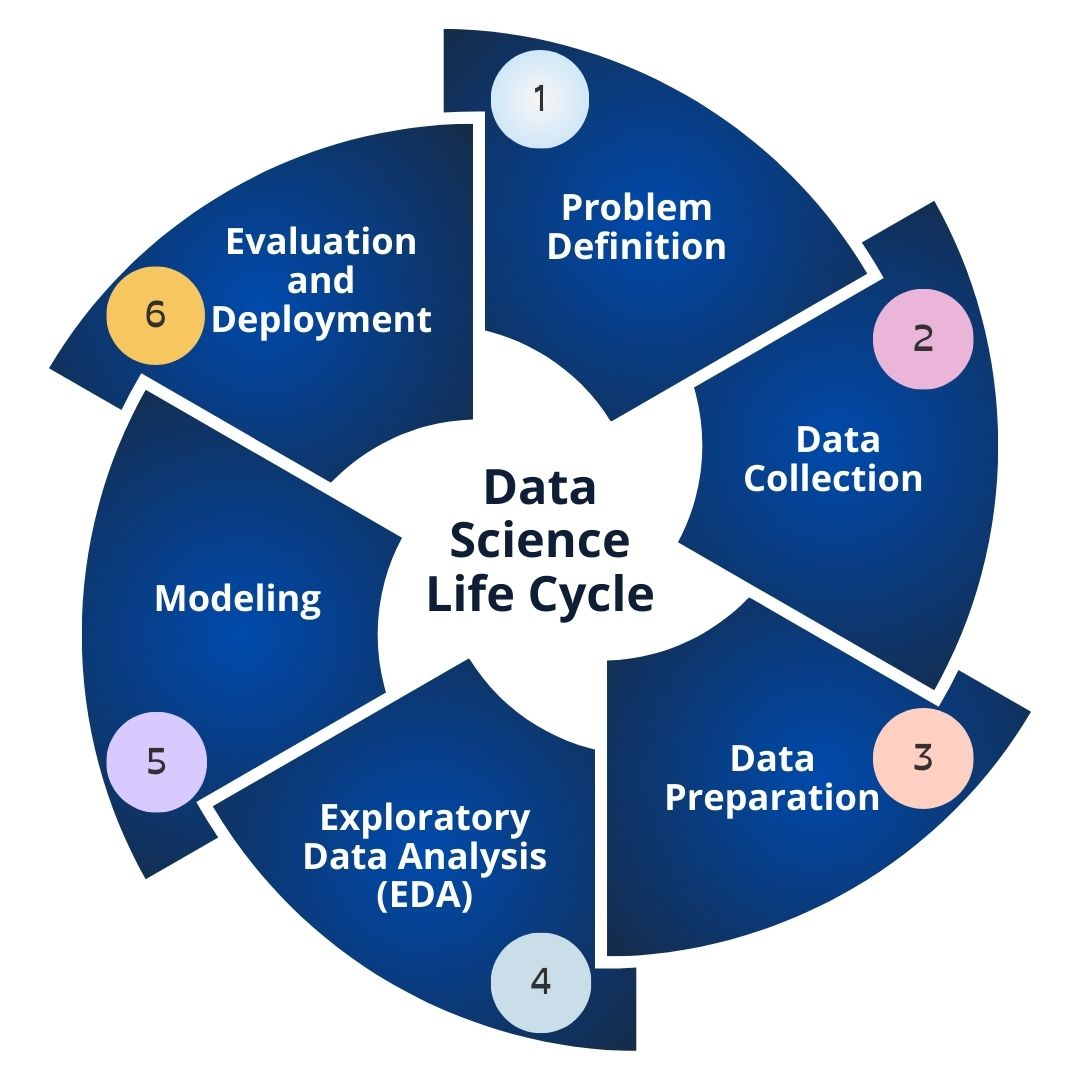In the rapidly evolving field of data science, the data science life cycle serves as a structured approach to solving complex problems using data. By following a systematic process, data scientists can effectively extract insights and make informed decisions. In this article, we will explore the 6 key steps of the data science life cycle and explain their significance.

Problem Definition :
The first step in the data science life cycle is to clearly define the problem at hand. This involves understanding the business objectives, identifying the key questions to be answered, and defining the success criteria. Without a well-defined problem statement, the data science project is likely to lack direction and focus.
Data Collection :
Once the problem is defined, the next step is to gather relevant data that will be used for analysis. This data can come from various sources such as databases, APIs, sensors, or external datasets. It is crucial to ensure the quality and integrity of the data collected to avoid biased or inaccurate results.
Data Preparation :
Data preparation involves cleaning, transforming, and organizing the collected data to make it suitable for analysis. This step may include handling missing values, removing outliers, encoding categorical variables, and scaling numerical features. Proper data preparation is essential for building accurate and reliable models.
Exploratory Data Analysis (EDA) :
EDA is a critical step in the data science life cycle that involves exploring and visualizing the data to gain insights and identify patterns. Through EDA, data scientists can uncover relationships between variables, detect anomalies, and understand the underlying structure of the data. This step helps in formulating hypotheses and guiding the subsequent analysis.
Modeling :
In the modeling phase, data scientists build predictive or descriptive models using machine learning algorithms or statistical techniques. The choice of model depends on the nature of the problem and the type of data available. Data scientists evaluate and fine-tune the models to achieve the best performance based on predefined metrics.
Evaluation and Deployment
The final step in the data science life cycle is to evaluate the performance of the models and deploy them into production. Evaluation involves testing the models on unseen data to assess their accuracy, precision, recall, and other relevant metrics. Once the models are deemed satisfactory, they are deployed for real-world use, where they can generate insights and drive decision-making.
The data science life cycle provides a structured framework for conducting data-driven projects from problem definition to model deployment. By following the 6 key steps outlined above, data scientists can effectively leverage data to extract valuable insights and drive business outcomes. Understanding and mastering each step of the data science life cycle is essential for success in the field of data science.

